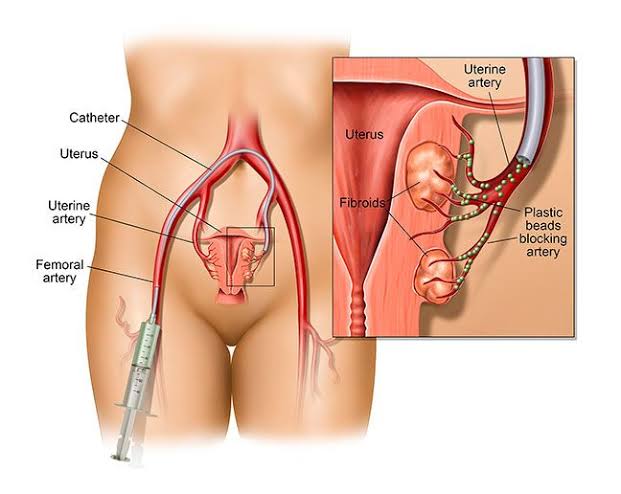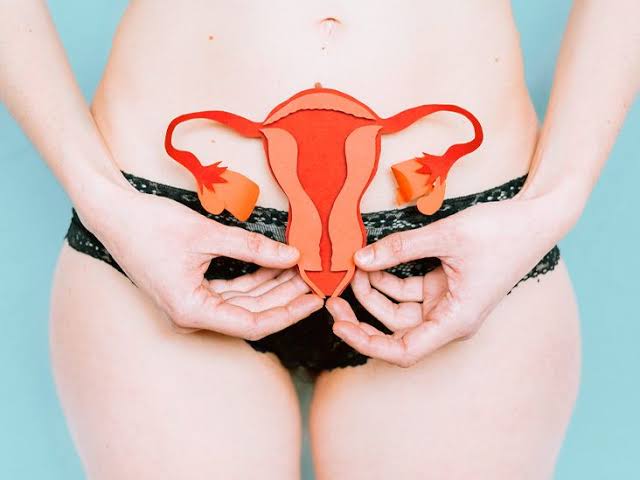- Get link
- X
- Other Apps
JUST IN
- Get link
- X
- Other Apps

A woman can be unaware that she has an enlarged uterus. Most often, women discover they have a problem during a pelvic exam.
It is possible a woman may notice a bloated belly or that clothes seem too tight, but for most, a diagnosis of an enlarged uterus is unexpected.
There are multiple reasons why the uterus may become enlarged. An enlarged uterus may be more common in menopausal women, but women in their childbearing years can develop this condition too.
Fibroids
Fibroids are one of the most common causes of an enlarged uterus. Fortunately, fibroids are noncancerous.
Fibroids are small lumps that can weigh up to several pounds. They are found along the walls of the uterus.
According to the Office on Women’s Health (OWH) of the U.S. Department of Health and Human Services, between 20 or 80 percent of womenTrusted Source develop fibroids before the age of 50. They are most common in women who are in their 40s and early 50s.
Fibroids may be asymptomatic, or may cause pain and heavy menstrual cycles.
Adenomyosis
Adenomyosis is a noncancerous condition that mimics symptoms of fibroids. It results in the lining of the uterus becoming embedded directly in the muscle wall of the uterus. During the menstrual cycle, the cells of the muscle bleed, causing pain and swelling.
The adenomyoma is the swollen part of the uterine wall. Upon examination, the adenomyoma feels like a fibroid, and it may even be confused with one on an ultrasound.
Adenomyosis may not cause any symptoms. In other severe cases, it can lead to heavy bleeding and cramping during menstruation.

Endometrial cancer
According to the National Cancer Institute (NCI), endometrial cancer is most often diagnosed in women ages 55 to 64. The NCI estimates there will be 61,380 new cases in 2017Trusted Source.
One of the symptoms of endometrial cancer is an enlarged uterus, although it can also be an indicator of advanced stage cancer.
Menopause
Perimenopause, which is the stage before a woman enters menopause, is another cause of uterine enlargement and is due to fluctuating hormone levels.
Inconsistent hormone levels during this period of a woman’s life may cause the uterus to enlarge. Most the time, the uterus goes back to its normal size once a woman has reached menopause.
Ovarian cysts
Ovarian cysts are fluid-filled sacs that grow on the surface of an ovary or within it. In most cases, ovarian cysts are harmless.
But if cysts become too large, they can cause an enlarged uterus, as well as more serious complications.
Symptoms
In addition to its physical size, an enlarged uterus may cause the following symptoms:
- menstrual cycle abnormalities, such as heavy bleeding and cramping
- a mass over the lower abdomen
- anemia due to excessive menstrual bleeding
- general weakness and paleness
- weight gain at the waistline, from the uterine overgrowth
- pressure symptoms on the uterus and surrounding structures
- cramping in the pelvic area
- constipation
- swelling and cramping in the legs
- backaches
- urinary frequency and urgency
- watery discharge
- bleeding after menopause
- pain during sexual intercourse
Treatment
Most causes of an enlarged uterus do not require treatment, although some women may need medication for pain relief. Birth control pills and intrauterine devices (IUDs) containing progesterone can ease the symptoms of heavy menstrual bleeding.
In very severe cases, some women may need a hysterectomy.
With uterine cancer, surgical removal of the uterus, fallopian tubes, and ovaries may be the recommended course of treatment. Following surgery, women may undergo chemotherapy and radiation.

Comments
Post a Comment
Let know your comments